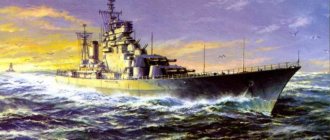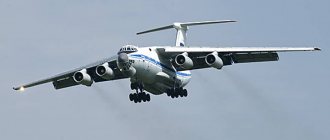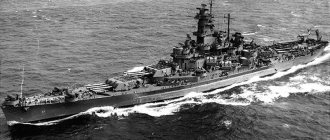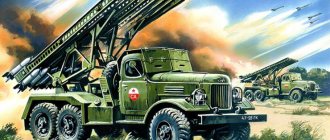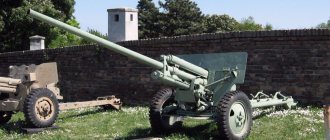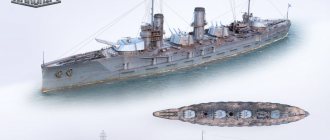In Soviet times, it was not customary to focus attention on the children of political leaders. But the people have always been interested in the life of the “Kremlin princesses and princes.” The most incredible rumors circulated about them, sometimes very far from the truth.
The life of the offspring of top officials in the USSR was not always heavenly, and for some its end was truly terrible. Vladimir Lenin had no children, so we will begin our story with the three children of Joseph Stalin : Yakov , Vasily and Svetlana .
Firstborn
So, how many children did Stalin have? So it’s difficult to answer right away. Let's go in order...
At the beginning of the twentieth century, the future ruler of the Soviet empire married for the first time. He was twenty-nine. The chosen one is 21. Her name was Ekaterina Svanidze. This marriage lasted only sixteen months. The wife died. But one month before her death, she gave her husband her first child, Jacob.
The deceased wife's relatives had to raise an heir. Father and son saw each other fourteen years later, already in the era of the USSR. By this time, the Leader of the Nations already had a second family. Yakov's stepmother, Nadezhda Alliluyeva, treated her stepson with warmth. But his father treated him like a nonentity. He didn't like almost everything about him. He punished him severely for the slightest offenses. Sometimes he wouldn’t even let the boy into the apartment, and he would spend the night on the stairs.
When Yakov was eighteen, he decided to marry his classmate, which is what happened. The father was categorically against this marriage. Because of this conflict, Yakov even tried to commit suicide. After an unsuccessful suicide attempt, relations between Stalin and Yakov completely deteriorated. The son began to live with relatives in the Northern capital. It was then that the newlyweds had their first child - daughter Elena, who, unfortunately, died in infancy. After some time, the couple decided to separate.
Sergo Beria
The son of Lavrenty Beria and Nino Gegechkori, whose first youthful love was... just Svetlana Alliluyeva.
During the Great Patriotic War, he was sent to an intelligence school and subsequently carried out important tasks, including during the Tehran and Yalta conferences. After the war, he became a design engineer in the field of missile systems, defending his candidate and doctoral dissertations. For his developments he was awarded the Order of Lenin and the Stalin Prize. There is an opinion that Beria’s rapid career growth was explained by his ability to pass off the team’s successes as personal.
Sergo Beria
In 1953, he was arrested, held in Lefortovo and Butyrka prisons, then was stripped of all ranks and sent into exile with his mother, while retaining the opportunity to work in his specialty. During this period, he changed his surname to Gegechkori. Sergo worked for ten years in Sverdlovsk at a local research institute as a senior engineer.
In 1964, at the request of his mother, he was transferred to Kyiv, where he worked as a leading designer at NPO Kvant. In the 1990s, he was the chief designer of the Comet Research Institute. He was married to the granddaughter of the writer Maxim Gorky, Marfa Peshkova, and had three children, who later took their mother’s surname and became the Peshkovs. The marriage broke up due to Sergo’s betrayal - having come to him in exile in Sverdlovsk, Marfa saw him with another woman...
Sergo Beria was an active defender of his father, wrote a book of memoirs about him, where, trying to whitewash him, he expressed his opinion about the inevitability of repressions during that period.
Return to the capital
Returning to Moscow, Yakov entered the Institute of Transport Engineers and after graduating he worked at one of the power plants. True, he worked very little in his specialty, since his father persistently recommended that he choose a different field. As a result, Yakov became a cadet at the Artillery Academy. Over the years of study, he gained fame as one of the best and most talented students.
Meanwhile, Dzhugashvili met Olga Golysheva. She was born in Uryupinsk, and in the capital she studied at an aviation technical school. Thus, the acquaintance turned into a love affair. However, Stalin was again against this relationship. Olga returned to her homeland, where she gave her lover an heir, Eugene. Relatives from the Golyshev side began raising the child. And the young mother returned to Moscow. But her relationship with Stalin’s son did not work out at all. After some time, they decided to separate.
In 1939, Yakov married again. His wife was ballerina Yulia Meltzer, who soon gave birth to a daughter, Galina. Surprisingly, the all-powerful Stalin did not put obstacles in the way of the young. But, predicting the course of events, let’s say that during the war, Yakov’s wife received a sentence in the Gulag.
Yakov Evgenievich Dzhugashvili
The great-grandson of the Soviet leader became an artist. He studied at art school in Glasgow and had his first exhibition in London. “I am proud of my origins and proud of my surname. I can’t say that the surname helps sell paintings, rather the opposite. If I helped, I would probably sell every day for work, but otherwise - two or three a month,” Yakov said in an interview with Snob magazine.
Painting by Yakov Dzhugashvili. (snob.ru)
In 1999, his works were exhibited at the art museum in Batumi. Another descendant of Stalin, the grandson of Yakov Dzhugashvili named Selim, also became an artist. Today Selim lives in Ryazan and paints.
Captivity
When the war broke out, Yakov was among the first to go to the front. His father, of course, a priori could have given him a staff position. But he did not do this.
Dzhugashvili found himself in the thick of it - near Vitebsk. He took part in one of the major tank battles. He was even nominated for an award. However, he did not manage to receive it...
The fact is that his battery broke out of the encirclement twice. But the third time Yakov failed to do this. He was captured.
For two years the Germans tried to persuade him to cooperate. But Yakov categorically refused. At the same time, during interrogations, he spoke about the deep disappointment associated with the unsuccessful actions of the Soviet troops at the beginning of the war. But he did not provide the information necessary for the Nazis. In addition, he never said anything bad about his homeland and the political system.
The Germans offered Stalin to exchange his son for one of the major German officers. But the leader was adamant.
...Yakov passed away in mid-1943. He was shot by a sentry in one of the death camps.
Stalin's children and their fate, photos from the archives - all this is of interest to those people who are not indifferent to our history. So we will continue.
Awards
Throughout the war, Vasily made 26 combat missions, shot down 5 enemy aircraft, demonstrated his strong-willed character traits and the ability to make quick and correct decisions in battle.
For valor and courage, Stalin was awarded three Orders of the Red Banner, Suvorov II degree and Alexander Nevsky, as well as 8 medals. Also in his “track record” there are foreign awards, including the Order of the Grunwald Cross, two medals - “For Odra, Nisa and Baltic” and “For Warsaw 1939-1945”.
Barchuk
In the first years of Soviet power, Stalin married again. He was already forty, and his chosen one was 17. Nadezhda Alliluyeva was the daughter of Stalin’s associates. At the same time, in her youth, an affair began between Stalin and her mother. Thus, after a while she became the mother-in-law of the Leader of the Nations.
Initially, this marriage was happy, but later it turned out to be simply unbearable. And for both. At the end of the autumn of 1932, after another argument with her husband, the wife closed the door to the bedroom and shot herself.
As a result, after the death of his wife, Stalin was left with their two common children - twelve-year-old son Vasily and six-year-old daughter Svetlana. They were looked after by nannies, housekeepers and security guards.
Vasily grew up as a rather mischievous boy. The father repeatedly told the teachers to behave very strictly with him. It was probably not for nothing that the leader called his youngest son “barchuk.”
In 1938, Vasily became a cadet at the Kachin aviation school. He enjoyed great authority and was considered a friendly person in the team. But most importantly, he loved to fly. Although he constantly argued with his superiors.
On the eve of the war, Vasily got married. His wife was Galina Burdonskaya. Her great-great-grandfather was a soldier in the Napoleonic army. During the battles of 1812, he was wounded and settled in Russia.
The marriage with Burdonskaya lasted four years. Did Vasily Stalin have children? Their fate (photo in the article) was not the best. Parents separated. Vasily forbade his wife to communicate with his offspring. She saw her children only eight years later.
Galina Brezhneva
The daughter of Leonid Ilyich Brezhnev, who gained scandalous fame thanks to her colorful novels and love for a luxurious life. Those who knew Galina described her as a kind and open person. She willingly helped her friends, girlfriends and acquaintances, and had a special love for art. In her youth, Brezhneva dreamed of becoming an actress, but her father did not approve of her choice - she had to go to a “more decent” philological faculty. But she still had a love for acting.
Galina Brezhneva
Throughout her life, Galina retained the habit of dressing up. But if in her youth these were bright, shocking outfits (once she even put a lace dress on her naked body and walked around the Kremlin), then at an “elegant age” she changed her style and began to dress more modestly. But she retained her love for diamonds and various precious jewelry. Her goal was to collect diamonds of all colors that are found in nature and preferably larger ones. She had an unspoken agreement with all the jewelry stores in the capital - as soon as a new collection arrived there, the management immediately informed the secretary general’s daughter about it.
Galina Brezhneva and outfits from her collection
In her personal life, Brezhneva was also a passionate person. Galina's first husband was the acrobat Evgeny Milaev, from this marriage Brezhneva's only daughter Victoria was born.
Subsequently, the couple separated due to Evgeniy’s betrayal - and Galina began an affair with illusionist Igor Kio. But Leonid Ilyich categorically opposed, and as a result, the couple, who got married literally a week ago, were forcibly “divorced” - Kio’s passport was taken away and returned without a marriage mark. But the lovers continued to meet, their relationship lasted for several more years.
Brezhneva’s last husband was Internal Service Major Yuri Churbanov, the Secretary General liked this candidate, the wedding took place, and the young husband’s career quickly took off, which is why the saying was born: “I don’t have a hundred sheep, but marry like Churbanov.” In order to marry Galina, Churbanov had to quickly divorce his first wife. After Brezhnev's death, Churbanov was arrested, and Galina filed for divorce.
Brezhneva’s romances with journalists Oleg Shirokov, Alexander Avdeenko, ballet dancer Maris Liepa and gypsy singer Boris Buryatse are also known. After the death of her father, the woman found herself virtually under house arrest and lived in a dacha near Moscow. The government tried to confiscate her property and jewelry acquired during Brezhnev's years in power. But Galina managed to win this process. In the last years of her life, the secretary general’s daughter drank heavily, and in 1998 she died in a psychiatric clinic, where she was undergoing another course of treatment.
Yuri Brezhnev
The son of the Secretary General and Galina's younger brother became a party leader and rose to the rank of First Deputy Minister of Foreign Trade. After the death of his father, he was retired and died in 2013.
His son Leonid is a chemist and teaches at Moscow State University, and his second son Andrei is an economist and politician.
Natalya Ezhova (Khayutina)
The adopted daughter of People's Commissar Nikolai Yezhov and his wife Evgenia Khayutina. She was adopted at the age of 11 months; the Yezhovs did not have any children of their own. It is interesting that after his arrest, the People's Commissar was charged, among other things, with homosexuality and homosexual relations. And perhaps this has a basis... After her father’s arrest and her mother’s suicide, Natalya was sent to an orphanage. Life was not easy for her there - the poor thing was bullied, constantly remembering who her father was. But in such conditions, the girl retained her gratitude and love for Yezhov, who adopted her. In 1998, she asked for her father’s rehabilitation, which was immediately denied. But Khayutina-Yezhova herself was recognized as a victim of political repression and received the appropriate certificate.
Since Natalya, with her background, could not enter higher educational institutions, she went first to a craft school and then to a music school, after graduating from which she asked to work north, in the Magadan region, where she lived for the rest of her life. Children of Anastas Mikoyan
Anastas Mikoyan had a large and friendly family. His wife Ashkhen Tumanyan gave birth to her husband five sons. The eldest, Stepan, became a test pilot and flew 25 combat missions during the war. Two other sons, Vladimir and Alexey, also went to flight school. Vano chose the profession of aviation design engineer, and Sergo Mikoyan became a fairly well-known publicist and historian, a specialist in Latin America. It is interesting to trace the attitude towards the so-called “golden youth”, the children of the party elite during the years of Soviet power. Of course, the offspring of leading political figures at all times lived much better than the “common people” and were always in a special position. But nevertheless, they truly became “untouchable” during Brezhnev’s times. No wonder it was Leonid Ilyich’s daughter who became a symbol of permissiveness and “luxurious life.”
War
In 1941, being a twenty-year-old officer, Vasily went to the front. He flew twenty-seven missions throughout the war. In addition, he was awarded prestigious military decorations for his participation in military operations.
At the same time, he repeatedly received penalties for hooliganism. He was also demoted. So, one day he was removed from command of the regiment. The fact is that he and his fellow soldiers went fishing. While fishing, he used aerial shells. As a result, weapons engineer Vasily was killed, and one of the pilots was injured.
In 1944, Vasily married again. His chosen one was the daughter of Soviet Marshal Timoshenko. Two children were born in this marriage.
In 1947, Vasily was appointed commander of the Air Force of the Moscow Military District. By this period, he was already seriously suffering from alcoholism and did not take part in flights.
But he had a completely new hobby. He began creating “pilot” football and hockey teams. He provided more than generous financial assistance to these athletes.
In addition, Vasily began to build a sports center. However, during one of the May Day demonstrations, he ordered several planes to fly over Red Square. Some of them, unfortunately, crashed. After this, Stalin dismissed his own son from the post of commander...
Friends
Stalin had very few close friends, and almost all of them either died or were killed, sometimes not without his participation. His revolutionary friend Fyodor Sergeev, known as “Comrade Artyom,” died in the early 20s during a trip to the so-called. experimental aerocar (trolley with an aeroengine attached to it).
Sergei Kirov, considered Stalin's closest friend and appointed leader of Leningrad by him, was shot dead in 1934. Avel Enukidze, who was also the godfather of Stalin's wife, was shot in 1937.
The head of Abkhazia, Nestor Lakoba, died under suspicious circumstances, immediately after dinner with Beria, which occurred after a serious quarrel with him. Ordzhonikidze also died under suspicious circumstances in 1937. It was officially announced that he died of a heart attack, but his wife later claimed that he shot himself, realizing that clouds were gathering over him. It was Kirov and Ordzhonikidze who stayed with Stalin the night after his wife’s suicide. Alexander Svanidze, the brother of his first wife and a friend from his youth, was shot in 1941.
Opal
When Stalin died, Vasily’s life went downhill. At first they decided to appoint him to a position away from the capital. But he did not obey the order. Then he was transferred to the reserve. And just a month and a half after the death of the head of state, he was completely arrested. There was only one reason. During one of the feasts with British citizens, Vasily outlined his version of his father’s death. He believed that he had been poisoned.
As a result, the former combat pilot and general spent eight years in prison. In 1961, ruler Khrushchev returned his awards, title and pension. But 2.5 months after his release, Vasily had a minor car accident. After this, he was banned from living in the capital. So he ended up in Kazan. He lived in this city for very little time, since in the early spring of 1962 Vasily died. He was only forty years old.
Death
On March 1, 1953, the commandant, who brought Joseph Vissarionovich mail, saw him lying on the floor. The guards came running to help and carried Stalin to the sofa. On the morning of March 2, doctors diagnosed him with paralysis on the right side of his body.
On March 5, 1953, the leader died. The official cause of death was cerebral hemorrhage. As a result of the autopsy, it was discovered that Stalin suffered many ischemic strokes on his legs, which damaged his psyche and caused serious heart problems.
Stalin's grave at the Kremlin wall
There are versions that his political ill-wishers were involved in the death of Joseph Vissarionovich, who considered the Stalinist direction in the leadership of the country unacceptable. According to historians, doctors who could have prevented his death and put Stalin back on his feet were specifically not allowed to see the leader.
The news of his death shocked the country. The leader's body was embalmed and placed next to Lenin in the Mausoleum. But eight years later, the leadership of the USSR decided to rebury Stalin in a grave near the Kremlin wall.
Only daughter
The only daughter of the Leader of the Nations, Svetlana, was born in 1926. Initially, Stalin himself doted on her.
However, as a high school student, she began to have romance novels. So, at the age of sixteen, she was in love with the forty-year-old screenwriter A. Kapler. Her lover managed to introduce the girl to good literature and poetry. He was able to cultivate her artistic taste. But the head of state was outraged. A case was opened against Kapler and he was sent to a camp.
Svetlana’s new chosen one was her brother Vasily’s friend G. Morozov. The father allowed his daughter to get married. In their marriage they had their first child. Despite this, after some time the couple separated. And the ex-husband was immediately removed from the capital. For three years he could not find a job.
Meanwhile, Svetlana met the son of Soviet leader A. Zhdanov, Yuri. Stalin loved the Zhdanov family very much and sincerely wanted these families to become related. And so it happened. Children appeared. By the way, at one time it was the head of state who helped appoint Yuri to the position of head of the department of the Central Committee. But the personal life of Stalin’s children did not work out... And this marriage also fell apart.
Defector
Svetlana's third husband was Raj Brij Singh. This old man was Hindu by nationality. Their acquaintance took place in the Kremlin hospital. And after some time, Singh died. The inconsolable widow was allowed to take her husband's ashes to India. After this, she decided to seek asylum at the British Embassy. Then she moved to the United States. Note that she fled abroad without children. By and large, they did not expect such an act and betrayal then.
Meanwhile, in the West, Alliluyeva published a number of books related to her father. She called him a “spiritual and moral monster.”
There she got married again. Her husband was the architect Peters from the USA. From this marriage a daughter, Olga, was born.
After some time, this marriage also broke up. Svetlana returned to the shores of Foggy Albion. And in mid-1984 she was allowed to return to the USSR. Alas, she was not forgiven by either her close people or distant relatives. For this reason, she went abroad again.
In recent years she lived in one of the nursing homes. She passed away in 2011. She was eighty-five.
House on Gogolevsky Boulevard
This architectural structure of the capital was erected in 1852. 100 years later (in 1949), Vasily, who at that time served as Commander-in-Chief of the Air Force of the Moscow Military District, settled at 7 Gogolevsky Boulevard.
Neighbors have repeatedly claimed that Stalin often disturbed them with noisy feasts and drinking parties, which ended in fights and scandals. Guests constantly came to him, and stayed almost until dawn. After the arrest, Stalin's apartment was sealed and a thorough search was carried out.
Foster-son
But these are not all the children of Joseph Stalin. He also had an adopted son, Artem. His own father, a close friend of the leader, comrade-in-arms Fyodor Sergeev died in a train accident. At that time, Artem was only three months old. Stalin adopted him and took him into his family.
The boy was the same age as the middle son of the head of state. They became best friends. Stalin barely set him up as an example, unlike Vasily. Artem was actually very interested in learning. Although the Leader of the Nations never made any concessions to him.
After school, Artem entered one of the artillery schools. He graduated from it in 1940. Just like Vasily, he went to the front. He was captured, but fortunately his escape attempt was successful. He ended the war as a brigade commander.
In 1954, Artem studied at the General Staff Academy and became a great military leader. Many believe that he is one of the founders of the anti-aircraft missile forces of the Soviet Union.
Artem Sergeev rose to the rank of major general. Until his last days he was a devoted communist. He died in 2008.
Last wife
There was another marriage that Vasily Stalin decided on. Biography, personal life, photos - all this haunts researchers, which is not at all surprising. The last wife was Maria Nusberg. Two daughters from his first marriage were also adopted by Vasily. The union was registered shortly before the pilot's death in 1962. All adopted children received the surname Dzhugashvili.
Vasily Stalin died soon after. Biography, personal life, wives, children - all this ended completely unexpectedly. His personality remains an object of study by the Stalinists to this day.
Happy son of the leader
In addition to the official ones, Stalin’s illegitimate children are known to history (photos are in the article). By and large, in his youth, Stalin was seriously interested in the fairer sex. At one time, he even intended to get engaged to one of the noblewomen from Odessa.
But all of Stalin’s illegitimate children (their fate is discussed later in the article) were born while he was living in exile.
So, the future leader was sent to Solvychegodsk. He was sheltered by Maria Kuzakova. From this connection a son, Konstantin, was born. Stalin practically did not remember his son, but for some reason Kostya was always lucky in his professional career.
Kuzakov, in fact, was a very modest person. He was, in fact, the happiest son of the leader. He grew up without a father and learned about his relationship with Stalin when he grew up.
After school, Konstantin became a student at the Institute of Finance and Economics in the Northern capital. After receiving his diploma, he remained at the university and worked as a teacher. Later he lectured at the regional party committee of Leningrad, and then in Moscow. Since 1939, he became the head of the propaganda and agitation department of the Central Committee of the All-Union Communist Party of Bolsheviks. Assistant to the head of state Poskrebyshev treated him well. And sometimes he gave him instructions from Stalin himself.
In 1947, in the wake of yet another repression, he was removed from all posts and expelled from the party. Beria generally demanded that he be arrested. But, as it turns out, the leader himself stood up for Konstantin. As a result, party membership was restored and Kuzakov's career resumed.
In subsequent years, Konstantin focused on working on television. His last position was as Deputy Minister of Cinematography of the Soviet Union. It was under him that the editorial staff of literary and dramatic programs on Central Television became truly elite. His subordinates sincerely respected, appreciated and loved him. He was truly an intelligent and smart leader. At the same time, Kuzakov’s origin was not a secret at all. Apparently, his career advancement was primarily due to his extraordinary abilities.
Kuzakov died in 1996.
Power struggle
Even during the life of Lenin, who in the last year was already unable to even speak, a struggle for power began. Trotsky was considered the most likely successor to the leader. He made a huge contribution to the success of the revolution, even more than Lenin. He was the commander of the army in the won Civil War. In all work areas, portraits of Lenin and Trotsky hung side by side and in official reports they were always mentioned together as the main leaders.
However, the party did not like Trotsky, considering him an upstart who had been arguing with Lenin throughout the pre-revolutionary period, and then came running at the most opportune moment and became perhaps the most important. The opposition to Trotsky was Zinoviev and Kamenev, who took Stalin for weight. The position of General Secretary of the Central Committee was specially created for him, supposedly a purely technical one. Both Zinoviev and Kamenev considered Stalin not dangerous, and therefore lobbied him for this position, expecting that Trotsky would also not be afraid of Stalin and would not understand ahead of time what was going on.
Trotsky was always weak in terms of party intrigues; he was more interested in the battle of ideas and the competition of oratory skills. He missed Stalin, however, and Stalin’s friends “did not notice the elephant.”
While they were all busy discussing issues of bureaucratization and Trotsky’s Bonapartism, Stalin called the secretaries of the provincial party committees and politely asked: is there any need to help somehow? Maybe my brother's wife needs a place to live? Should I place my son in a better hostel? He was interested in health and had intimate conversations. It’s not that he was interested in how life was with the provincial secretaries, he simply understood perfectly well that it was the secretaries of these party committees who formed the composition of the delegations that went to party congresses, at which the main decisions were made. And then these delegations, formed from loyal people, voted for Comrade Stalin’s proposals.
Step by step, Stalin formed his army of devoted supporters in the apparatus, invisible but very dangerous. He easily managed to deprive Trotsky of his post as army commander by initiating an audit of army affairs. The commission that checked the army, of course, was personally selected by Stalin.
Subsequently, he defeated other political opponents just as easily. The tactics were simple: he first played them off against each other, then acted as a peacemaker, and then, having secured the support of the majority, he defeated them one by one.
The so-called Stalinist positions were further strengthened. Lenin's call to the party, initiated personally by Stalin. If earlier the party was a get-together between the Leninist guard and the old revolutionaries, then Stalin brought almost 250 thousand people into it. Most of them - workers and peasants, often not even literate, completely ignorant of ideological subtleties and who considered Stalin to be in charge, always and in everything supported his platform in internal party disputes.
All these events allowed Stalin to completely defeat all party factions, oppositions and platforms by the end of the 20s and beginning of the 30s. The Bolshevik Party turned into the party of Comrade Stalin, and his opinion could no longer be challenged or questioned by anyone.
The ordinary life of Stalin's son
We continue to talk about Stalin’s illegitimate children and their fate. Another illegitimate son of the leader was Alexander Davydov.
Finding himself in yet another exile, the future head of state cohabited with Lydia Pereprygina. At that time, the girl was only fourteen. The gendarmes intended to punish the lustful revolutionary. But he swore to them that he was going to marry Lida. However, this did not happen. Stalin escaped from exile. And the revolutionary’s future bride was expecting a child at that time.
After some time, she gave birth to a son, Sasha. According to several sources, Stalin first corresponded with Pereprygina. Then rumors spread that Dzhugashvili died at the front. As a result, Lydia did not wait for the groom and married Yakov Davydov, who worked as a fisherman. Pereprygina's new husband adopted Alexander and gave him his last name.
They say that in 1946, Stalin unexpectedly gave an order to find out information about the fate of his son and his mother. The leader's reaction to the results of this search is unknown.
By and large, the illegitimate son of the leader lived a fairly simple life. He fought on the fronts of the Korean and Great Patriotic Wars. He rose to the rank of major. In the post-war period, he lived with his family in Novokuznetsk. Davydov worked as a foreman and also managed the canteen of one of the city enterprises. He passed away in 1987.
Now you know all of Stalin’s children and their fate (photo in the article). It's time to look at some more moments from the life of his descendants.
Personal life
In 1940, Vasily met Galina Burdonskaya, who was a student at the Printing Institute. In addition, she was the daughter-in-law of Vladimir Menshikov, a famous bandy player. However, the status of the leader's son did the trick. The couple soon got married, but the marriage was unhappy and short-lived.
Vasily Stalin, biography, personal life and children - all this is of interest even now. His first wife gave birth to his son Alexander and daughter Nadezhda. They separated during the war, when the family lived in evacuation. Daughter Nadezhda, when she grows up, will marry the adopted son of the famous Soviet writer Alexander Fadeev.
It is believed that the cause of the breakup was the violence perpetrated by Vasily Stalin. The biography and personal life of this man continued to unfold sharply. In 1946, he married Ekaterina, the daughter of Semyon Timoshenko, Marshal of the Soviet Union. Their son Vasily will die in his youth from a drug overdose while studying at the university. The couple also had a daughter, Svetlana. The marriage lasted three years and ended in 1949.
Kapitolina Vasilyeva became the third wife that Vasily Stalin received. Biography, personal life, his children remained under the radar of the authorities, but he still adopted his wife’s daughter from his first marriage. Kapitolina was a famous athlete - a swimmer who became the champion of the USSR. They lived together from 1949 to 1953.
